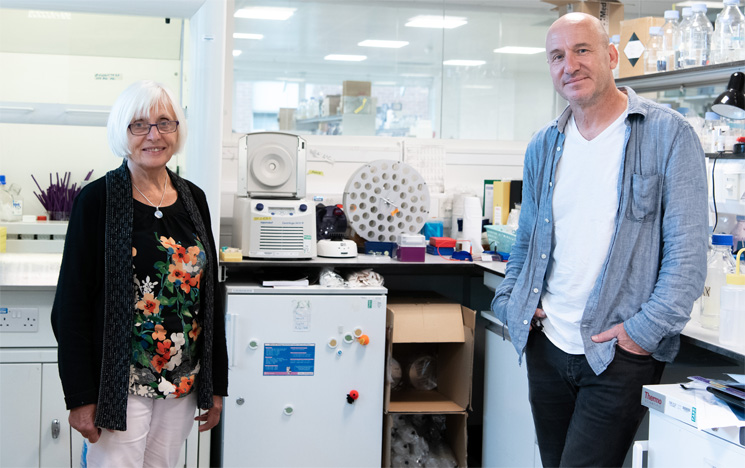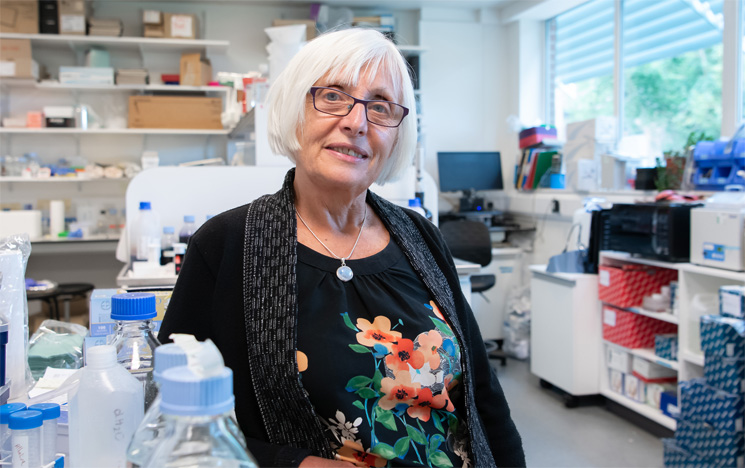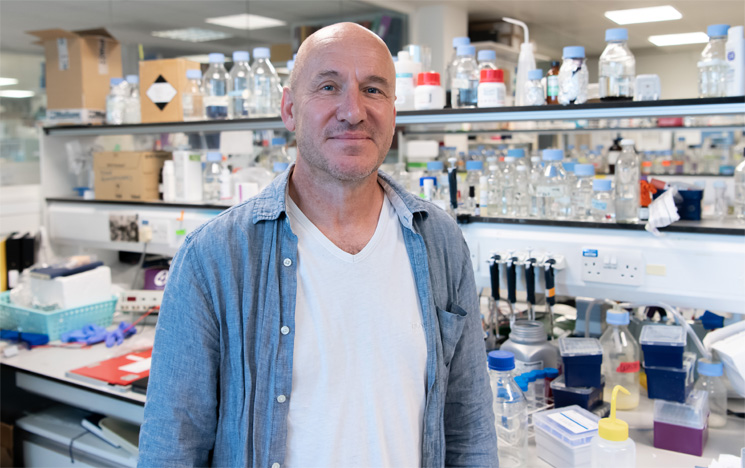The ‘gene hunters’ who give hope to those with rare diseases
Patients with vary rare diseases often feel extremely isolated. Since 2014, two Sussex scientists have been providing a diagnostic service for clinicians and their patients that is giving sufferers and their families help, hope and understanding.

For more than three decades Professors Keith Caldecott and Penny Jeggo have been tracking down human genes that repair defective DNA.
Based at the University of Sussex’s Genome Damage and Stability Centre, the molecular biologists have identified a number of genes that, if mutated, give rise to a range of rare but devastating diseases that affect patients’ mobility, neurological development, and immune systems.
Their specialist knowledge has led to an invaluable service that helps clinicians in the NHS and around the world diagnose patients with neurological and developmental conditions such as microcephaly, a developmental disorder characterised by a small head at birth, and ataxia, a progressive neurodegenerative disease affecting coordination and balance and can cause seizures.
Their work also helps to bring together sufferers and families, who are then able to create support networks to share knowledge, expertise and experiences.
Optimising patient care
“When clinicians are presented with patients whom they suspect have these conditions, they often approach us to confirm the diagnosis at the molecular and genetic level,” explains Caldecott. “With the availability of genome sequencing, they may have identified a gene and will ask us to confirm it as the gene that’s causing the problem. But sometimes the causative gene is unclear or unknown, and then we can apply our expertise to hunt it down.”
In these circumstances, the clinicians send Caldecott and Jeggo a blood sample from the patient or a skin biopsy so that they can grow cells and run a series of molecular tests to confirm or assist the diagnosis.
The information helps both the clinicians and the patients in several ways. In addition to having a clear diagnosis, the clinicians can use the information to manage patient care and optimise treatment.
For the patients, the identification of the defective gene means that they won’t need further invasive tests, and can ensure that future treatments are appropriate for them.

Psychological benefits for sufferers and their families
Gaining knowledge about what has caused the condition also brings psychological benefits for both the patients and their families.
Jeggo says: “I’m involved with the A-T (ataxia telangiectasia) Society. There are around 200 individuals in this country with mutations in this gene that cause progressive neurodegeneration. The society enables them to make contact with each other. They can share stories and experiences – and talk about what works for them.
“When the families gather for a ‘family day’, I attend as the scientific advisor. It’s a little sad because a lot of them realise that there’s no cure at this stage until a gene therapy is available. But we can give them help, hope and understanding. The minute people understand how the problem has arisen, they feel more in control of it.”
The diseases are caused by breaks in one or both strands of DNA. Genes carry the information that make the proteins that normally repair these DNA breaks, but in the diseases Caldecott and Jeggo diagnose, these genes are defective.
Breaks in one strand are called single-strand breaks and are very common. In fact, every cell in our body experiences such a break every five seconds, usually caused by our own metabolism, or by external factors such as sunlight or radiation. Breaks in both strands are called double-strand breaks and are much rarer, but at the same time are more toxic to the cell.

The excitement of uncovering new genes
The rare gene mutations identified by Caldecott and Jeggo affect just a few hundred people worldwide, with the diseases often originating in close-knit communities with small gene pools.
“We’re trying to understand how faulty proteins that repair our genome cause hereditary disease,” says Caldecott. “Once we understand what these proteins are doing we can identify and understand the diseases they cause. In the process of doing that we can often uncover new genes that have a similar or related role.”
Caldecott has identified a number of genes that encode proteins that help repair single-strand breaks or that, when faulty, cause neurological diseases. Sufferers, often children, can have seizures or neurodegeneration and can become wheelchair bound.
Jeggo is interested in proteins that help repair double-strand breaks. When faulty, these proteins lead to immunodeficiency and, in some cases, greatly increased risk of cancers. Tragically, individuals with these faulty genes are also highly sensitive to the radiotherapy that is often used to treat cancer. Such treatment can be fatal for these patients. A successful diagnosis means individuals can receive alternative, non-radiotherapy treatments.
Caldecott says: “Understanding why DNA breaks arise and how our cells repair them has been the focus of our careers.
“From a scientific perspective, discovering something new is always exciting. That’s why scientists do what they do. What motivates us is identifying new genes and new pieces of the jigsaw of how DNA is repaired.
“But once you realise that your discoveries are relevant to health and can affect people and families directly, then that provides a different kind of motivation - one that is even more rewarding.”
Contact us
Research development enquiries:
researchexternal@sussex.ac.uk
Research impact enquiries:
rqi@sussex.ac.uk
Research governance enquiries:
rgoffice@sussex.ac.uk
Doctoral study enquiries:
doctoralschool@sussex.ac.uk
Undergraduate research enquiries:
undergraduate-research@sussex.ac.uk
General press enquiries:
press@sussex.ac.uk